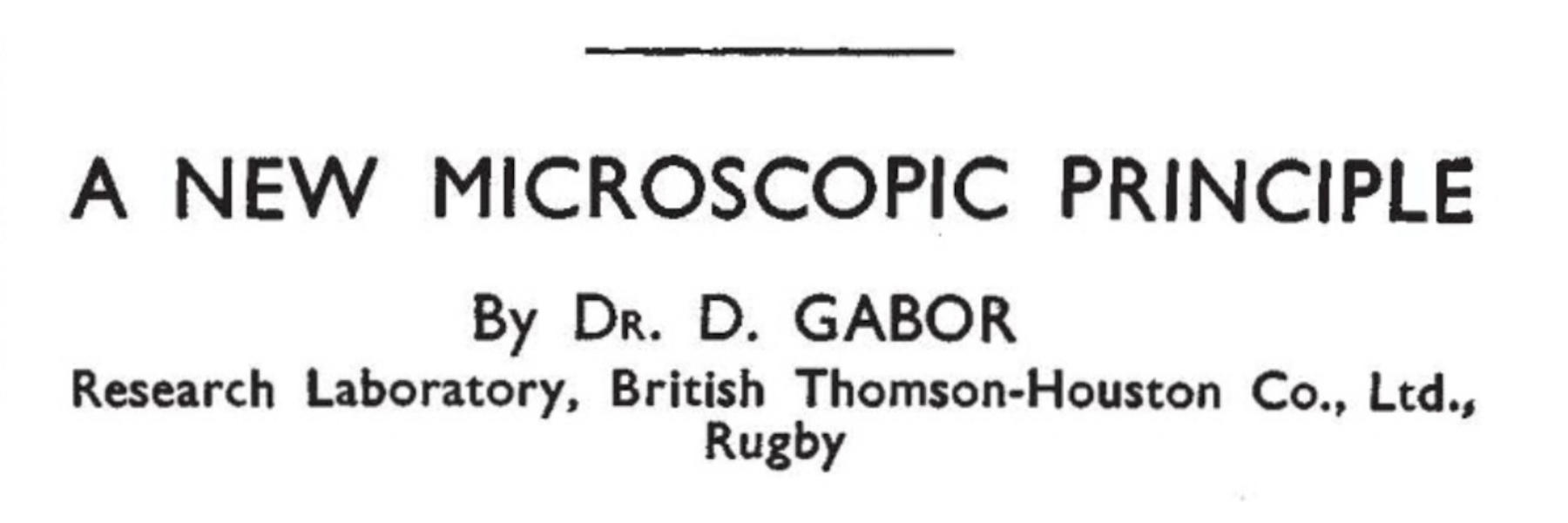
29 Jul The Inception of Holography
In my previous post, What holography is NOT, we learnt which technologies are often mistakenly called “holographic”.
This time, we’ll start exploring what holography actually is. But before we dive in, we have to recognise the problem:
Holography is not a single effect or method
– it is a field of science in itself
So to give holography enough justice, while not turning this blog into a year-long lecture series, we’ll start with the definition to understand and explore what it actually means, we will travel back in time to 1947 to learn how Denis Gabor invented it. And we’ll finish off with examples of applications of holographic technology.
Holography now spans multiple techniques, from digitally steering small things with light (“optical tweezers”) through to holograms on your credit cards, all the way to next-gen 3D displays. Trying to put all these quite different applications under one “umbrella definition” can be a little troublesome.
The definition of Holography
(and what it actually means)
The definition that I enjoy comes from the book Optical Holography by Hariharan, P and reads:
Holography is a technique which enables a wavefront to be recorded and later re-constructed. Holography is best known as a method of generating three-dimensional images but it also has a wide range of other applications.
Let’s break it down a little: “wavefront to be recorded and later re-constructed” means that the way that light travels is first somehow preserved in a recording medium. Then, you take this medium and in the right circumstances, you can reconstruct the same bunch of light. It’s a bit like “freezing” the light in motion and then “making it go again”. Let’s explain this step by step.
Wavefront Reconstruction
Imagine an object – a flower in its pot. When you’re looking at it, what you perceive is a bunch of rays (or waves) of light that interacted with the object and somehow made its way to your retina.
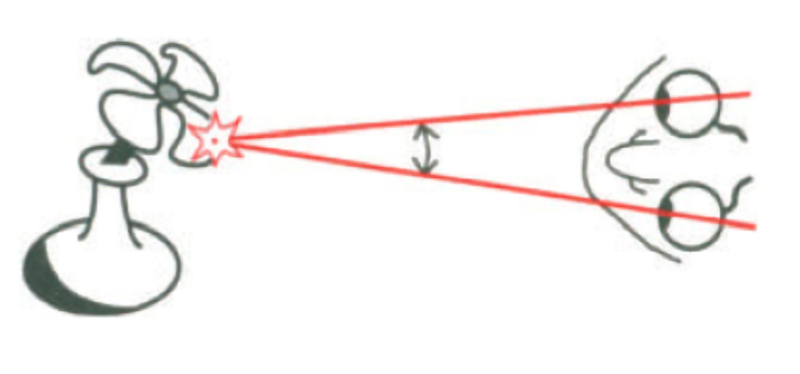
There is a physical process that can actually “record” these rays, and not just their brightness – that’s exactly what photographs do and this had already been well established in the 1940s. What we want is a mechanism to remember how strong a light ray is and where it came from.
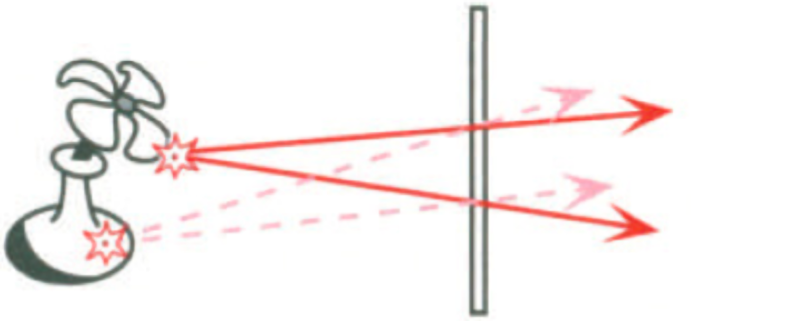
If this technique exists, it is possible to “replay” those rays and “reconstruct” them in exactly the same fashion.
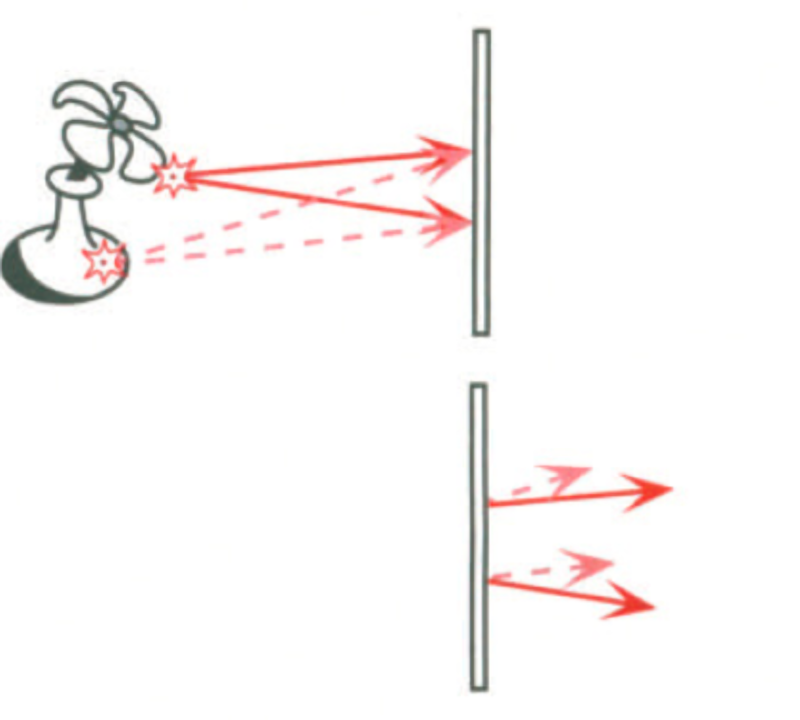
It’s then easy to see that if you can present the copy of our rays to your eye, you really don’t need an object any more. You can already perceive all of its properties, since all your eye sees is light.
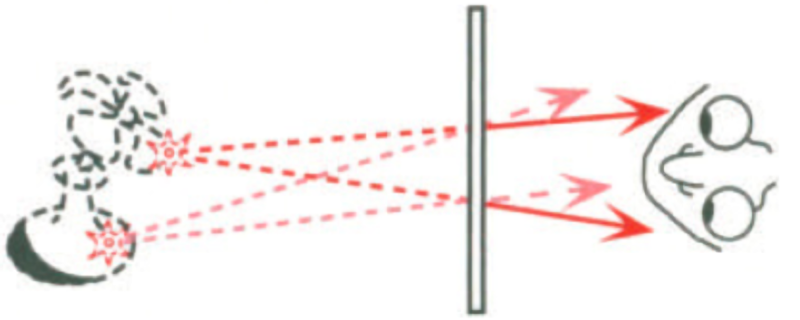
Holography is the technology that offers us the ability to record and reconstruct wavefronts – by utilising the wave nature of light. It is fundamentally different from anything before it.
Not sure about you, but I’m thinking:
How on earth would a person conceive something like this?
Behind every great invention is the scientist who worked hard to bring it to existence. Let’s dig into the story of Denis Gabor and the invention of holography.
The Eureka Moment
Gabor, a Hungarian-born scientist, who previously fled Europe on the brink of war, ended up in Rugby, UK. He worked as an engineer at British Thomson-Houston Research laboratories and explored a new type of a microscope – the one which uses electrons instead of light.
Gabor had a bit of a chip on his shoulder. He had laid the groundwork for the electron microscope during his PhD. He had it in his hands, and yet, he didn’t connect the dots when there was an opportunity. “How could anybody capable of putting two and two together not think of an electron microscope?”, he once famously said.
As revolutionary as the electron microscope was, it was just a little bit away from being able to see single atoms FOR THE FIRST TIME IN HISTORY!
That’s because the “lens” of this microscope (which was just a simple coil of wire), was making the image blurry. Scientists often call this blur spherical aberration, and in practice it works a little like looking at an image through a raindrop.
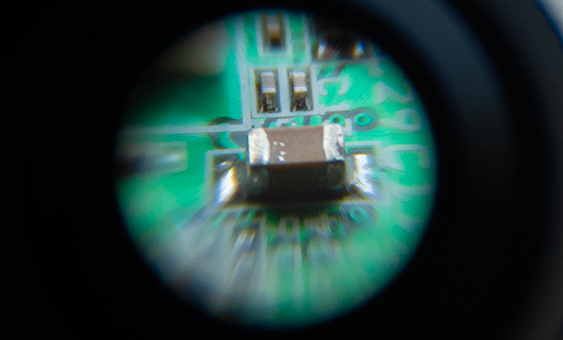
While on Easter holidays in 1947, Gabor was struck with a thought: “what if we could record that blurry image, and then correct it using visible light?” After all, we knew quite well how to make optical lenses!
The first Hologram
After a bit of work, Gabor constructed the optical setup pictured below:

The “electron gun” on the left-hand side is the source of the waves, which then get focused onto a spot. Right after that focus, we have the object we want to “see”. The light of the object mixes with the original source of waves and the mix of the two gets recorded onto a photographic plate.
When we insert this “Hologram” and illuminate it with visible light, we see an “Image” of the object coming into existence in space behind the “hologram”.
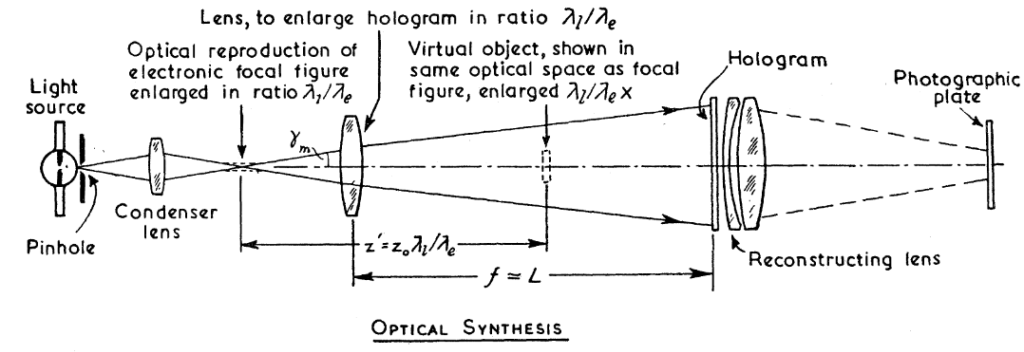
In order to prove the principle, Gabor recorded and reconstructed his first holograms optically. In the image below, you can see this process visualised. The “hologram” looks like a slightly blurry image with the familiar circular patterns.
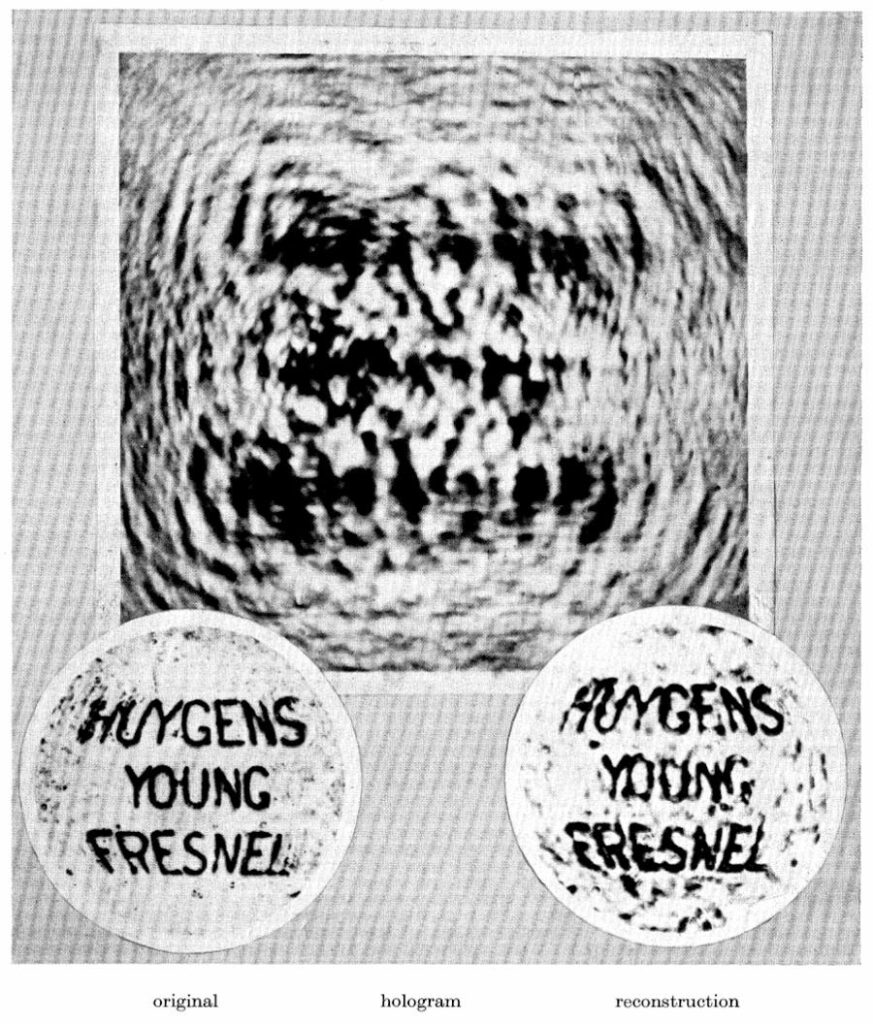
The idea worked as expected, but came with a surprise. Quoting Gabor’s Nature paper:
“It is a striking property of these diagrams that they constitute records of three-dimensional as well as of plane objects”
A New Microscopic Principle – Dr. D. Gabor
Gabor termed these strange diagrams “Holograms”, from the Greek word holos – whole. Holograms can capture a <whole> information about the object and its 3D properties, in a single picture – with science!
This single discovery led to a number of applications, some of them absolutely bizarre and unexpected. Let’s have a look.
Applications of Holographic technology
You may not even realise this, but I bet you have a few holograms in your pocket right now.
Security Holograms
Holograms are far more than pretty pictures. As they are not straight-forward to construct, and require a great deal of knowledge and specialised equipment, security has been one of the first real-world applications of holography.
Security holograms tell us that the notes in our wallet came from the Bank of England, and that the credit card is a bit of plastic that you can really trust.
Holographic Optical Tweezers
Unlike ordinary tweezers that some ladies use to regulate their eyebrows, optical tweezers are for a little more delicate tasks. Imagine picking up a single cell – you can’t quite do it with an ordinary tool, but you can achieve this with light! As it turns out, light is capable of putting pressure on very small objects in a way that moves them about. And holography is great at shaping light into an arbitrary form.

As fun as it can be to move small things about, there are plenty of real-life applications. These include studying interactions of small objects with one another – like a single particle with light, or a single bacterium with its environment.
Holographic Display
Holography had a lot of luck early on with generating impressive high-quality images:
The idea that one day, we may have a 3D display capable of realistically reproducing 3D objects fascinated generations of scientists throughout decades. Great work happened at MIT media lab as well as University of Cambridge, and recently, research centres of big tech giants (Microsoft, NVIDIA and Samsung) joined the party and started actively researching holographic technologies.
Despite the fact that Computer-Generated Holography dates back to the 1960s, the progress was quite slow because generating high-quality images has been a challenge.
In Summary
1. There are some great life lessons in Gabor’s life story
- The only time when Rugby, UK was a better place to be as opposed to Berlin was the 1930s and 1940s
- Refugees really aren’t that bad – maybe one day one of them will invent something as big as holography!
- Going on holidays and freeing your mind can actually enhance creativity, leading to MORE good ideas (as opposed to working yourself to death!)
2. Holography is an umbrella of terms covering a field of science
Holography originated from improving electron microscopes. Then scientists started producing pretty pictures, security materials, and art. Nowadays, we have holographic optical storage, optical tweezers, optical metrology, holographic optical elements and of course, holographic display. All of those applications have a right to be called “holographic”, even though they are completely different.
3. The common factor in all applications of holography is utilising wave nature of light
Amongst all of the applications of holographic technology, one element is common: treating light as a wave and using properties like diffraction (bending of the wave as it encounters small obstructions) and interference (ability for multiple waves to “overlap”). I’ve previously written on the topic in my post “Let there be light!”
4. Realistic Displays using Computer-Generated Holography are coming soon
Looking back into the past is useful. But really the reason we do it is because it helps us put what we do into perspective and helps us imagine the future.
As Denis Gabor famously said “Future cannot be predicted, but can be invented!”.
Displays using Computer-Generated Holography have been the fascination of generations of scientists. Now we are seeing several signs that this dream can actually become a reality within the coming years.
That’s because several technologies are getting to the point where they can support such displays: light modulators, compute, rendering engines.
This is the topic of my next post “Computer-Generated Holography”!


